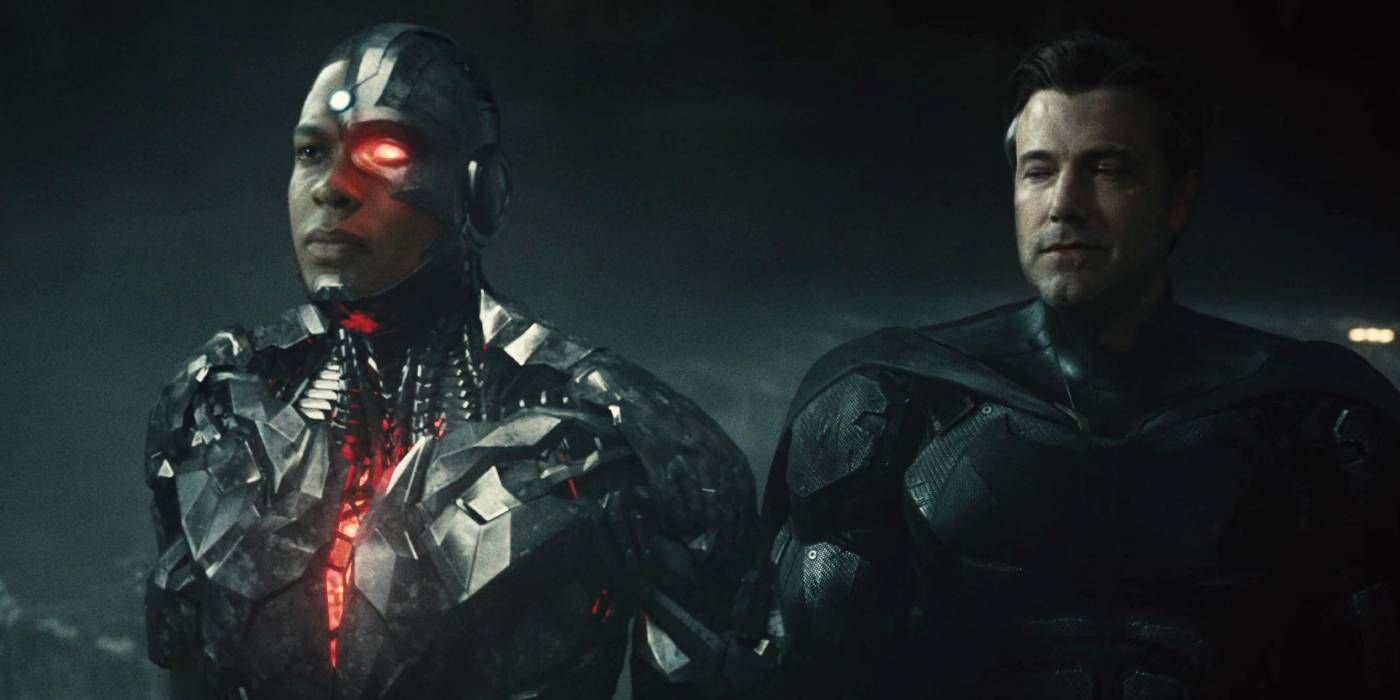Cyborg fixing the Flying Fox in Zack Snyder’s Justice League was a key part of his story of self-acceptance. Among the heroes redeemed by Justice League’s Snyder Cut, Ray Fisher’s Victor Stone, a.k.a. Cyborg, remains the biggest redress for any individual character. He was finally seen as the central character of the Justice League’s formation, as was always intended with Snyder having designated him as “the heart of the movie."
SCREENRANT VIDEO OF THE DAY
In the Snyder Cut, Victor is in awe of his newfound technological abilities. However, he still views his cybernetic change with anger and bitterness toward his father, Silas (Joe Morton), who transformed the dying Victor into the cyborg superhero. In Zack Snyder's Justice League, the advanced military troop carrier known as the Flying Fox is used for a major turning point for Victor, who is able to communicate with the plane. He swiftly repairs the Flying Fox, and his description of the process shows how much it shifts his view of his new state as Cyborg.
As the Justice League boards the Flying Fox to battle the Snyder Cut's massively improved villain Steppenwolf (Ciarán Hinds), Victor explains the repair process to Bruce Wayne/Batman (Ben Affleck) by saying, “It wanted to fly. Flight is its nature," to which Bruce replies, "Yours too." With these words, Victor displays a completely new kinship with technology. Because of the cybernetic changes he has undergone, the Flying Fox helps Victor understand that life exists within technology, a key element in Victor’s arc.
The Flying Fox Helped Victor Accept Himself In Justice League

Upon making contact with the Flying Fox, Victor speaks of the aircraft in very human terms, telling the skeptical Arthur Curry/Aquaman (Jason Momoa), “I speak to intelligence," and, “This one’s saying she can’t fly because of a software issue, but I could fix it with a little time.” Communicating with the Flying Fox in this way gives Victor in his Cyborg identity (minus the name) a new outlook on himself because of what they share. If the Flying Fox is a being of intelligence that wants to fly, that means that machines have life, and Victor, as a hybrid of man and machine, realizes he does, too.
That is a massive contrast from how Victor begins Zack Snyder’s Justice League, as a young man wanting only to hide from the world after the car accident that killed his mother, Elinor (Karen Bryson), and nearly also ended his own life. Victor angrily rebuffs the perspective of Diana Prince/Wonder Woman (Gal Gadot) that his powers are a gift, but in being able to speak to the Flying Fox when no one else can, Victor comes to understand that Diana was right. More importantly, he realizes that the life he thought he had lost has simply taken on a new form without ever dying. Snyder's Justice League sequels would've concluded Cyborg's story with his powers expanding and his relationship with them coming full circle.
Victor recognizing that his gifts as Cyborg have not cost him his humanity is essential to his story in Zack Snyder’s Justice League. So, too, is his relationship with the Flying Fox. From repairing a dormant aircraft, Victor learns that life exists in many forms, including technological, and he finally sees that, like it is for the Flying Fox, flight is his nature.
